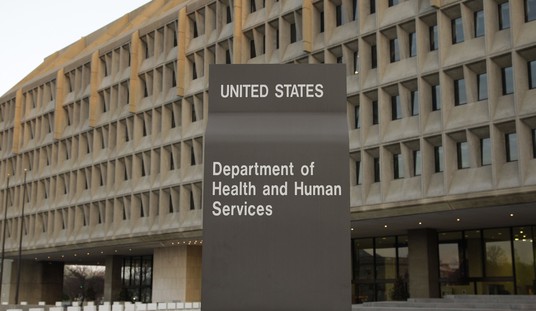The Federal Reserve surprised most observers yesterday by continuing its extraordinary stimulus through monetary policy in place — and at the same time undercut the White House messaging on the economy. The New York Times reports that Ben Bernanke’s announced “stunned” the financial sector:
All summer, Federal Reserve officials said flattering things about the economy’s performance: how strong it looked, how well it was recovering, how eager they were to step back and watch it walk on its own.
But, in a reversal that stunned economists and investors on Wall Street, the Fed said on Wednesday that it would postpone any retreat from its monetary stimulus campaign for at least another month and quite possibly until next year. The Fed’s chairman, Ben S. Bernanke, emphasized that economic conditions were improving. But he said that the Fed still feared a turn for the worse.
He noted that Congressional Republicans and the White House were hurtling toward an impasse over government spending. That was reinforced on Wednesday, when House leaders said they would seek to pass a federal budget stripping all financing for President Obama’s signature health care law, increasing the chances of a government shutdown.
And the Fed undermined its own efforts when it declared in June that it intended to begin a retreat by the end of the year, causing investors to immediately begin to demand higher interest rates on mortgage loans and other financial products, a trend that the Fed said Wednesday was threatening to slow the economy.
“We have been overoptimistic,” Mr. Bernanke said at a news conference Wednesday. The Fed, he said, is “avoiding a tightening until we can be comfortable that the economy is in fact growing the way that we want it to be growing.”
The Washington Post’s Ylan Mui points out that the US economy keeps missing its growth expectations, and the Fed didn’t have much choice. The announcement that the policy would continue was accompanied by downgrades in the Fed’s projections on growth:
Stock markets soared to record highs as investors welcomed the unexpected announcement of more stimulus. But the Fed’s message about the recovery was not so rosy, and officials again cut their forecasts for economic growth. …
The last time the Fed tried to jump-start the economy through buying bonds, a process known as quantitative easing, it was criticized for cutting off the program before the economy had fully healed. The decision to stay the course now shows that officials are determined not to make the same mistake again.
And they are growing more pessimistic about the economy. Fed forecasts for growth in the nation’s gross domestic product range from 2 to 2.3 percent this year, down from the 2.3 to 2.6 percent predicted over the summer. GDP growth is expected to pick up to between 2.9 percent and 3.1 percent next year [note: down from previous projections of 3-3.5%]. …
But much of the incoming economic data have been murky. The economy expanded at a 2.5 percent annual rate during the second quarter, but job growth has come in fits and starts. Hiring has fallen short of many analysts’ expectations.
John Makin at AEI blasts the Fed for creating the conditions that now require it to continue with its monetary expansion, and neatly describes the hole they’ve created for themselves with this policy:
To put the same thing another way, after managing to introduce the additional drag of sharply higher interest rates and attendant signs of a housing relapse, by talking, prematurely as it turns out, about tapering, the Fed cited a “tightening of financial conditions” (that it had caused) as a reason not to taper. The FOMC, it turns out, needs to see “more evidence that progress (on the economy) will be sustained before adjusting the pace of purchases.”
So much for helpful “forward guidance” from the Fed. In case the always-optimistic Fed economic forecasters haven’t noticed, there was never a reason to talk about tapering in view of an economic pick up. During the first half of 2013, the US growth rate averaged a 1.8% pace, the unemployment rate dropped modestly, but only because more people are dropping out of the labor force. Beyond that, inflation-the Fed Hawks’ favorite boogeyman– has slipped down to a 1.2% pace, well below the Fed’s 2% target.
Read the rest of it to understand just how unlikely we are to grow enough for the Fed to put a taper in place, and then be sure to read Makin’s explanation from two weeks ago about how we’re more likely to see another round of qualitative easing than a taper.
Essentially, the Fed is stuck in this cycle because the economic policies in place are depressing growth by penalizing capital and dumping more and more costs on business. Until that changes, the Fed will only have one tool in its toolbox, and every time they hint at putting it away, the conditions will worsen and require them to retreat. We are on a path for a decade-long stagnation — or perhaps even longer — unless American economic, regulatory, and tax policies change dramatically first.








Join the conversation as a VIP Member